
- Sailing Croatia tips
-
by Ultra Sailing Team
Croatia is known to all as a country for an ideal vacation, with beautiful sea, coast and islands. A lot of guests visit our country in search of hidden coves, quiet beaches, picturesque towns, and the most beautiful sunsets. In addition to the standard inquiries where they can swim and enjoy the sun in peace, sometimes guests ask us for a slightly different route. Croatia has a long history and, along with beautiful nature, is full of sights and monuments. If you are renting a sailboat and would like to see something besides swimming and sunbathing, take a look at the following text…
ISLAND BRAČ
If you have rented a boat in central Dalmatia and sail to the central Dalmatian islands, stop on the island of Brač, known for its beautiful small towns and olive oil.
On the south side of the island, next to the famous beach Zlatni rat, you can see the Dominican monastery in Bol, founded in 1475. The monastery has a library with rare copies of older editions of books, manuscripts and books, of which a prominent place is occupied by the painting „Virgin Mary with Saints“ by Jacopo Tintoretto.

At the west of Bol, there is the small place called Murvica, next to which is the Dragon’s Cave, a monument to the monastic life of Glagolitic priests from the 15th century. It was named after the creatures carved into the cave walls.
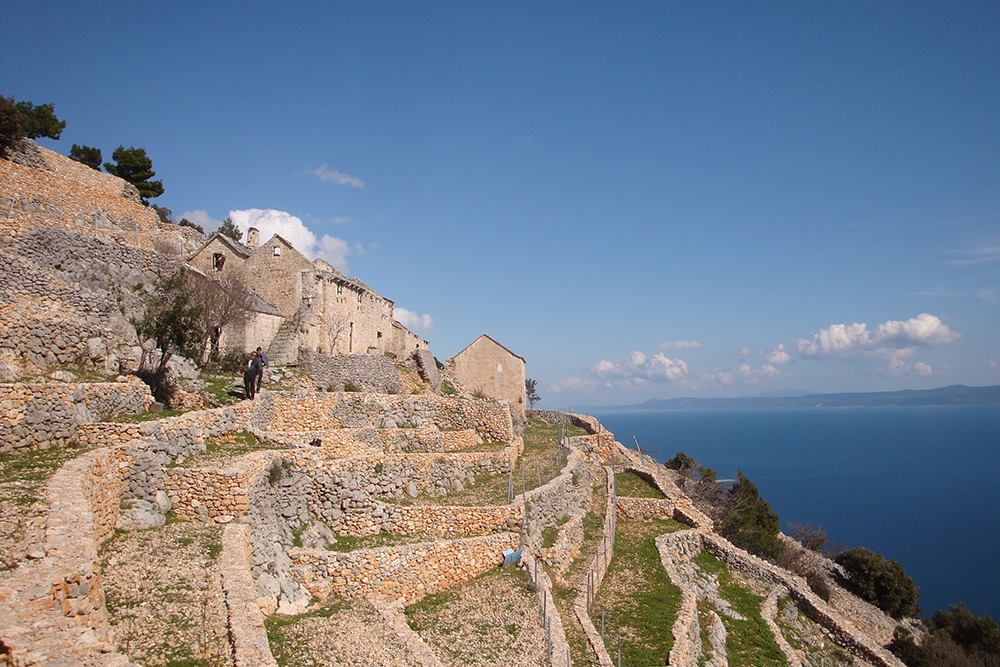
On the southern slopes of the island of Brač, between Bol and Milna, is the Blaca Desert, a former hermitage of Glagolitic monks, founded in the 16th century. A number of stone houses along with the church have been preserved along with a rich inventory, astronomical instruments, a printing press, an archive and a library. Today, this desert represents a protected cultural asset as a unique cultural monument.

Inland of the island of Brač has many places you should as well. For start, it would be Museum of the Island of Brač, in Škrip, the oldest place on the island. In addition to the museum building, there are also houses, Illyrian walls, a Roman mausoleum, and a fortress. In addition to sculptures, the museum also has an ethnographic collection and valuable items of home furniture.

Near the Museum of the Island of Brač, in the same place, there is the Museum of Olive oil. Here you can learn about the traditional way of olive oil production and the history of its production. At the museum, you can also taste oil, cheese, and other local products.

If you find yourself on the north side of the island of Brač, do not miss to moor in Pučišća. People in this place have been living with and from stone for centuries. Therefore, it is not surprising that their Stonemasonry School in Pučišća is widely known. It is also possible to do tour the school with the expert guidance of a master stonemason.

ISLAND VIS
35 NM from Split there is a small island, inhabited from prehistoric times, the island of Vis. The island was an ancient Greek colony from which the name Issa dates. Later it changed rulers frequently, and in the second half of the 20th century until 1992. the island was closed to foreign visitors and served as a large military base. In the 19th century and the first half of the 20th century, fishing and fish processing were developed on the island, as well as viticulture in the town of Vis and the interior of the island.

On the north-eastern side of the island is the town of Vis, located in a large and protected bay, a favorite mooring for boaters. In Vis, you can moor along to the city waterfront in 2 places (in the area called Kut and in the city center). Also, during the summer crowds, buoys are available in the bay. Near the city waterfront, in a part of town called Kut, there is the Archaeological Museum of Vis.
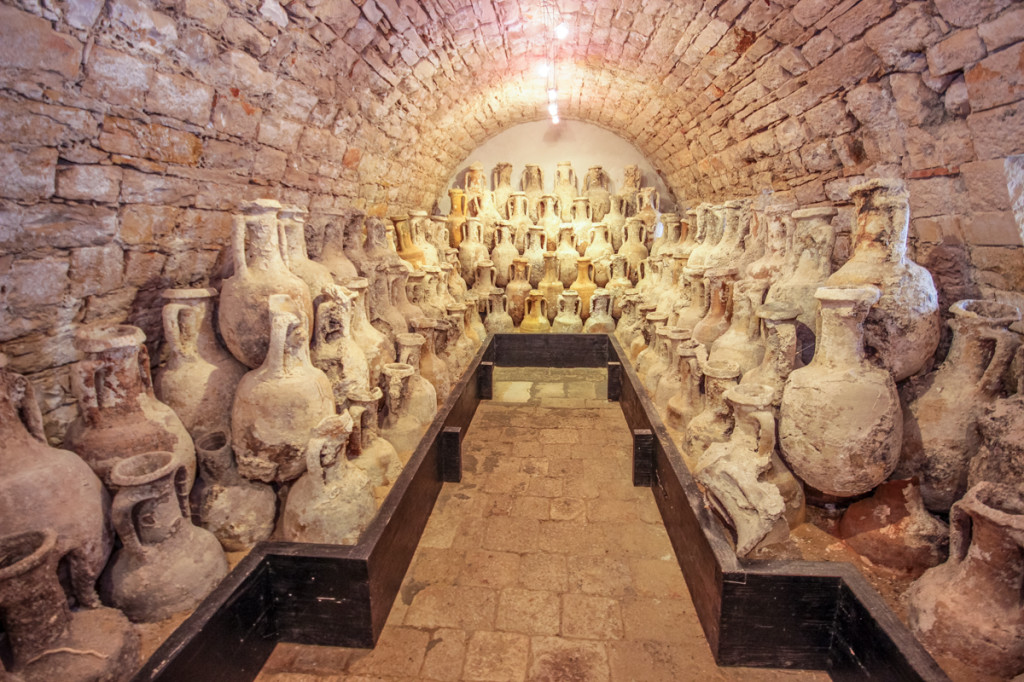
The museum is located in the Batarija fortress, built in the 19th century. It has a large collection of dived-out amphorae arranged in the way they were stacked in the ship’s deck. The museum also has a large collection of Hellenistic monuments, objects from prehistoric times, and an ethnographic exhibition.

In the city center, near the ferry port, there are Roman’s baths built in the 1st century.
On the northwest side of the island, there is a beautiful natural cave, the Queen’s Cave. It´s named after a legend that says the Illyrian queen Teuta lived there. Archeological remains from the Neolithic and Late Bronze Ages have been found in it.

If you sail from the town of Vis to the town of Komiža, choose the route from the east side of the island. Next to the island of Budikovac there is an island of Ravnik where the Green Cave is. Anchor nearby and visit it, best around noon when most light enters through a hole in the central part of the cave.
About 5 NM south-west of the town of Komiža is the island of Biševo, well known to all because of the Blue Cave. It is named after the beautiful blue color that reflects the sun’s rays entering the cave through the underwater opening. The color is the most intense around noon.

When you sail to the town of Komiža and find a suitable berth, use your free time to walk through the small streets. Visit the Fishermen’s Museum located in the Venetian fortress on the waterfront. The museum contains a collection of ship equipment, fishing equipment and those related to fish processing, which was once extremely developed in Komiža. There is also a replica of the famous Komiža ship, Falkuša, a boat specific for Komiža.
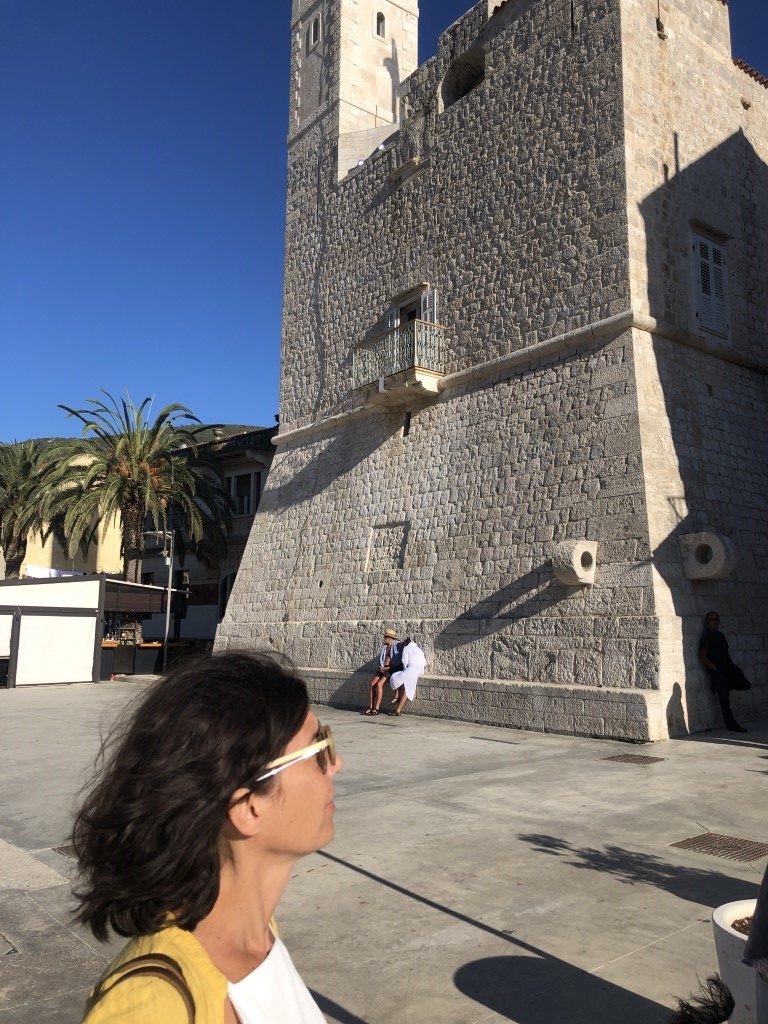
On the hill above Komiža, there is the church and monastery of St. Nicholas, a protected cultural asset. From here there is a beautiful view of the place, the island of Brusnik, and the island of St. Andrew. Every year, on the day of St. Nicholas, the patron saint of this place, an old wooden boat is traditionally burned as a ritual sacrifice to save sailors, fishermen, and travelers. The ashes of the burned boat are used to bless the newly built ships.
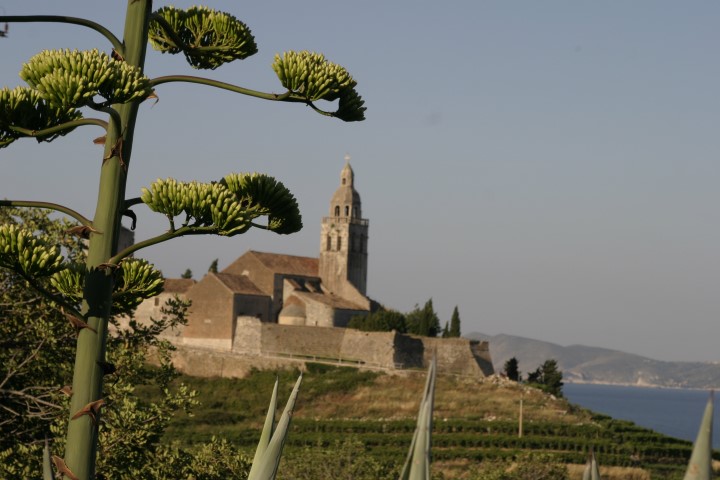
ISLAND HVAR
30NM from Split you can find a beautiful city on the island of the same name, the town of Hvar, which dates back to the 1st millennium BC. Apart from its rich history, the town of Hvar is also known for the largest number of sunny days in Croatia. Summers are long and warm, winters are short and mild. As the island of Hvar is located in the center of Adriatic waterways and the port of Hvar itself is protected by the Pakleni islands in front of it, Hvar has long been a famous nautical center that provided a haven for sailors. You can moor alongside the city waterfront or catch a buoy. During the summer days, it is very difficult to catch a berth there, so many boaters find their safety in the ACI Marina Palmižana on the Pakleni islands or on buoys on the south side. From ACI Marina Palmižana to the town of Hvar you can get taxi boat .
Once you touch the mainland, take a walk through the city center to the main square called St. Stephen’s Square or Pjaca, the largest in Dalmatia, dating from the 15th century. On the square there is the Cathedral of St. Stephen’s where you can see paintings by Italian painters.

There is also the Arsenal building on the Square – on its first floor is the Hvar City Theater from 1612, the first theater in Europe which was open to all civil classes, nt only for the nobles. The original Arsenal was built in the early 14th century and served as a place to store and maintain city galleys. Later it was filled in and served as a storage room, in recent times as a cinema, while today it serves as a gallery and venue for performances. Arsenal remains one of the largest buildings in Venetian Dalmatia.

At the bottom of the Square is Mandrač, a small port that served as a safe place for ships. Opposite of Mandrač is the town lodge, called Loggia, which dates from the 15th-16th centuries. During the Venetian authority, it served as a public courtroom, while in later times it served as a reading room and a dancing hall. Next to the loggia is the Clock Tower, Leroy. The city clock was installed on the tower in the 15th century, while the bell, which is still on the tower, dates from the 16th century.

The very center of the city is surrounded by walls built to defend the city from pirates and later from the Turks. On a hill above the city center is Fortica, a fortress built in the 16th century. It offers a beautiful view of the entire city, the Pakleni islands and Vis. Collection of amphorae is located in the fortress, in addition to the walls and cannons, you can also visit the historic prison. Be sure to visit Fortica at dusk.

On the way to Fortica stop by the church of St. Antun. There is a Benedictine monastery. The specificity of this monastery is that its inhabitants make agave lace, which is included in the UNESCO list of intangible cultural heritage.
A few minutes of pleasant walk from the cathedral is the summer house of Hanibal Lucić. Built-in the 16th century, it served as a summer residence for the Hvar poet Hannibal Lucić. It consists of 2 houses and a beautiful renaissance garden. Today, a Hvar Heritage Museum and the State Archives are placed there.

Another place you should visit while in Hvar is the Franciscan Monastery. It is located along the city promenade, 10 minutes pleasant walk from the main square. Within the monastery is the church of St. Marija of Grace, built with donations from Hvar nobles and sailors who arrived by ship in Hvar. The monastery is famous for its rich library and museum collection, the painting The Last Supper by Matteo Ponzoni and the hundred-year-old-cypress.
Stari Grad is another beautiful place on the north side of the island of Hvar, interesting for boaters because of the protected bay at the end of the deep bay. In the village itself you can moor on the city waterfront. Stari Grad is the oldest place on the island of Hvar, called Faros in history. It was founded by the Greeks from the island of Paros in 384 BC. While you are in Stari Grad, be sure to visit the Petar Hektorović fortress. The summer house of this old-town poet is known for quotes carved in stone, fishpond in the center of the summer house and a park rich with various plants.

Next to the summer house is the Old Town Museum with its thirteen collections. Its rich permanent exhibition and additional exhibitors are worth seeing.
Near the town, there is The Stari Grad Plain, called Ager. It is a protected landscape where the ancient division of land can be seen even today and is therefore on the UNESCO World Heritage List.
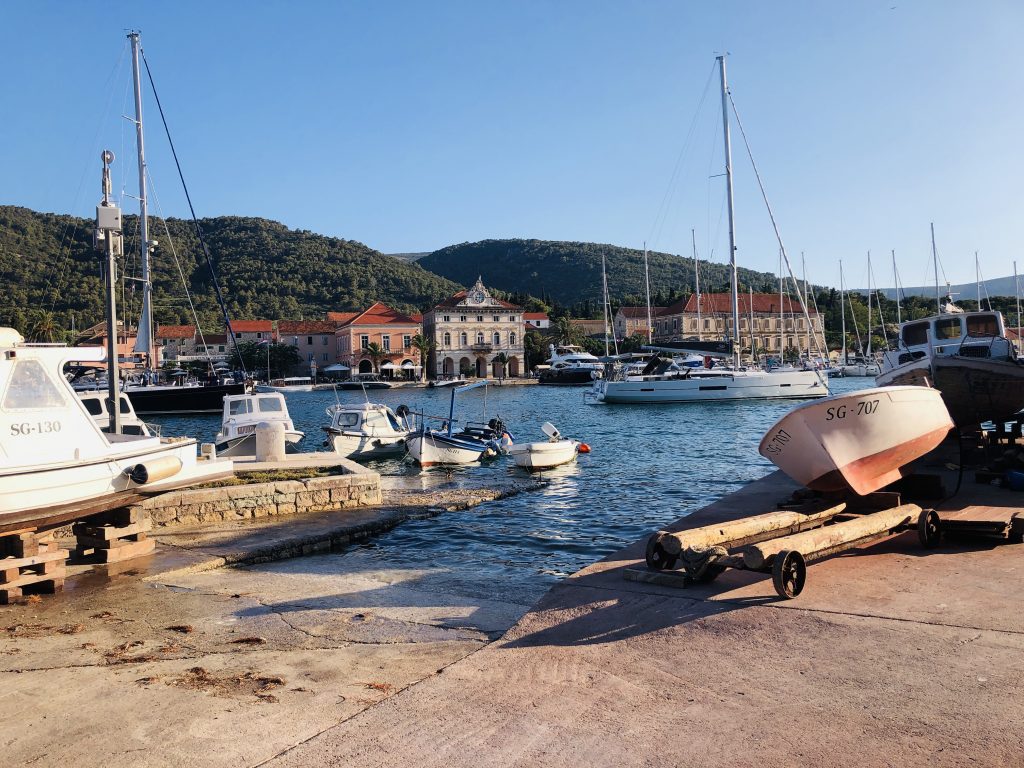
On the north side of the island of Hvar is worth visiting a place that is located between Stari Grad and Jelsa, called Vrboska. Created in the 15th century as a fishing port, the place has survived till today and is named Hvar’s Little Venice because of its charming bridges. In Vrboska you can moor in the ACI Marina in the city center. Near the marina, there is a Fishermen’s Museum where you can find authentic fishing tools and equipment used in fishing and items from the factory of fish products that was in function untill 1972. Not far from the marina is the famous Church – Fortress of St. Mary of Mercy. The church served as a fortress to defend the locals from the Turks. Her valuable works of art are today stored in the church of St. Lawrence. Both churches are accessible to visitors and keep valuable paintings and frescoes made by Italian and Croatian artists.
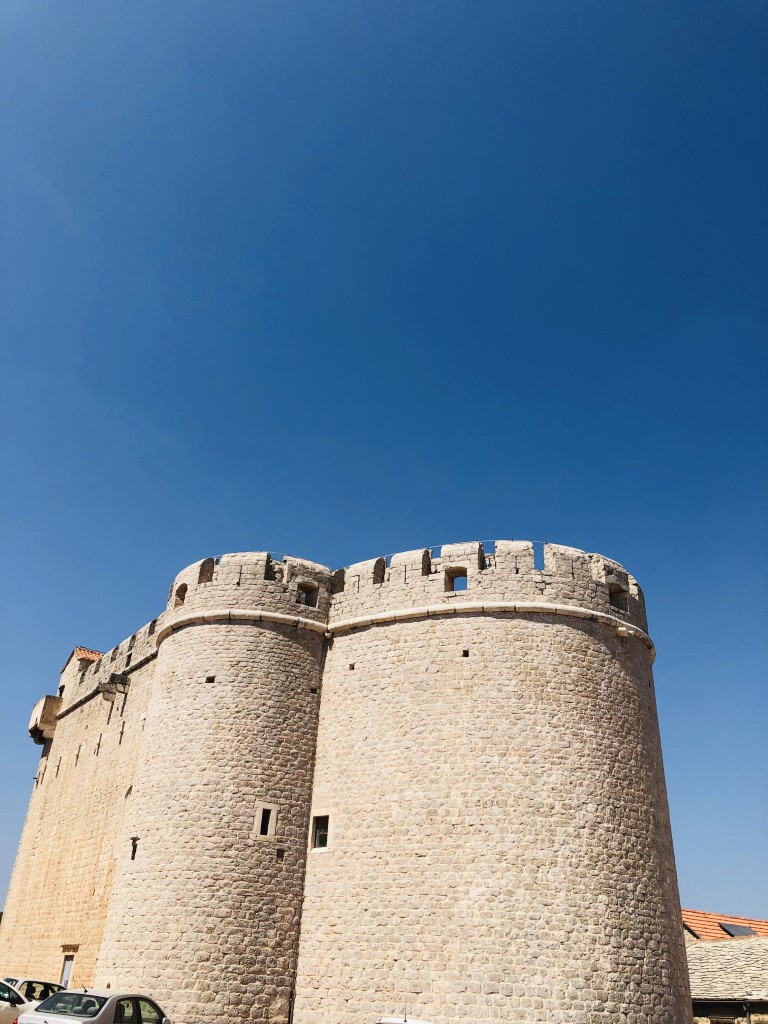
Not far from Vrboska is Jelsa, a charming place located on the north side of the island of Hvar. Jelsa was first mentioned in the 14th century as a port of the place Pitve which is located on a hill not far from Jelsa. There are a couple of churches and chapels with a rich history in Jelsa. Church of St. Mary is also fortified, all because of attacks by the Turks. In the center of the town, there is the Municipal House with a town hall that keeps valuable furniture, a rich library, archive of the Duboković family, and a collection of old paintings.

There is also the Museum of the Municipality of Jelsa on the square, with a rich exhibition of books, paintings, reliefs. One of the interesting things is that in Jelsa in the 19th century the first Croatian reading room on the Adriatic islands was founded. The waterfront in Jelsa is newly renovated and you can moor on both sides of the bay. Be sure not to visit Jelsa while the bora is blowing because the bay is exposed to that wind.
If you are sailing in the spring, we definitely recommend you to watch the procession „Following the Cross“, which takes place once a year on the night of Holy Thursday. This is a valuable part of the island’s heritage that has been going on continuously for 400 years and is included on the UNESCO World Intangible Heritage List.
If you are an exploratory spirit and like excursions, rent a car and visit Grapčeva cave, which is about 20 minutes away by car from Jelsa to the island inland. Valuable Neolithic remains have been found in it, which testify about population of the island more than 6000 years ago. The oldest ship scheme in Europe was found on a ceramic vessel in a cave.

You rented a sailboat and headed for Šibenik. The Šibenik archipelago is located between the island of Žirje in the south to the island of Murter in the north and is full of islands, islets, and reefs. If you are wondering what to see on these islands, take some time and read our suggestions.
ISLAND ZLARIN
The island of Zlarin is the closest island of the Šibenik archipelago, only a few nautical miles from the city of Šibenik. Although small, this island has been known since ancient times for corals. The Zlarin’s residents have been engaged in coral hunting and processing them since the 14th century. Zlarin has a large waterfront, 131m long and 16 m wide, which makes it a favourite nautical mooring spot. The first written traces of this island date back to the 13th century, but found objects from Roman times tell a much longer history. The town center is adorned with a tower with a local clock, known as Leroj. Visit the church of Our Lady of Rašelj, which is famous for the legend of Our Lady and the girl.
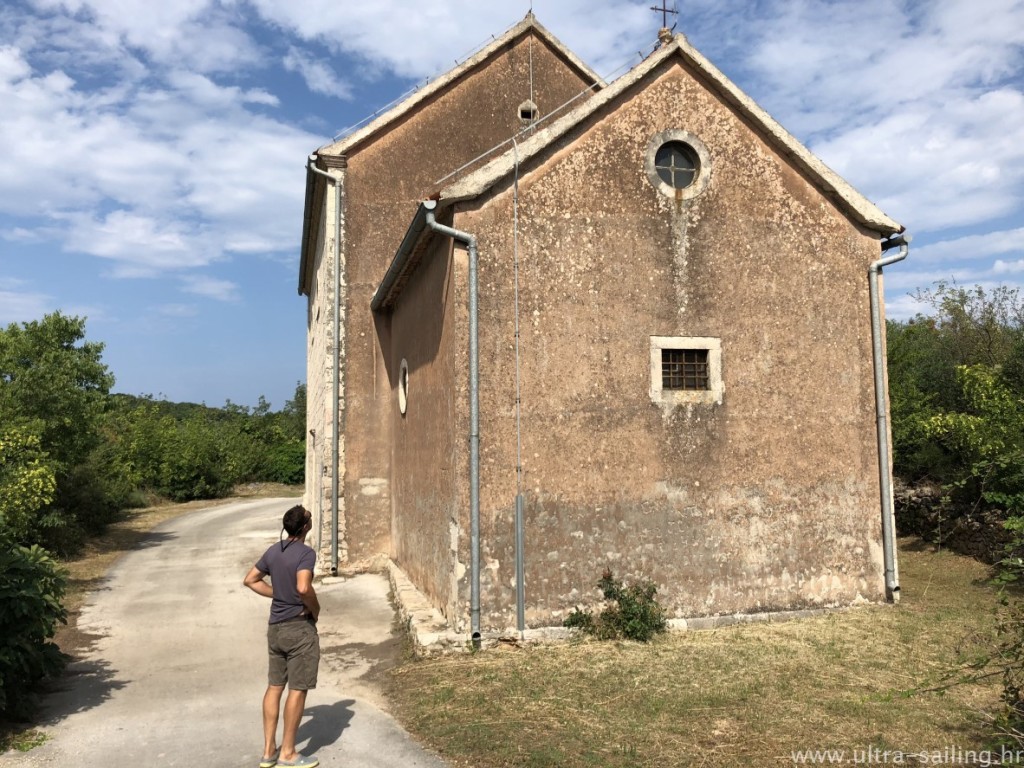
Zlarin is the birthplace of the Croatian poet Vesna Parun. The Native Museum is named after her. It exhibits a collection of ethnographic objects of the island, original tools for extracting and processing coral, and there is a memorial room dedicated to Vesna Parun. While you are in Zlarin, don’t miss the Coral Museum.

ISLAND PRVIĆ
Island of Prvić is placed opposite Zlarin, with 2 settlements, Prvić Luka and Prvić Šepurine. In Prvić Luka it is possible to moor to the city waterfront. Right next to the main pier there is a beautiful building, the Faust Vrančić Memorial Center. Faust Vrančić was a distinguished humanist, historian, lexicographer, inventor, and above all, a visionary. He lived in the second half of the 16th century – the first half of the 17th century. His “Dictionary of the five most prominent European languages – Latin, Italian, German, Dalmatian and Hungarian” is the first Croatian and the first Hungarian dictionary in history. He also wrote the book “New Machines” in which he describes in detail useful inventions that were intended to facilitate human work. Vrančić’s idea of a bridge with one rope is the forerunner of today’s cable car. Did you know that Faust Vrančić invented the first functional parachute? He presented his invention in a book called “Homo Volans – Flying Man”. Be sure to visit this museum and see its entire exhibit.
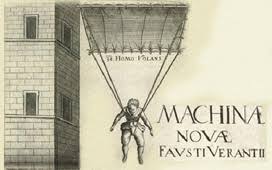
ISLAND MURTER
The island of Murter is located in the north of the Šibenik archipelago. It has 3 nautical marinas on its 17.58 km2 – in Betina, Murter and Jezera. It is an ideal starting point for boaters who want to sail in the Kornati. The island has been inhabited since prehistoric times. Apart from numerous cultural and historical sights and historical sites, Murter is also known for its shipbuilding. Be sure to visit the Betina Wooden Shipbuilding Museum, located in the center of Betina. The museum preserves valuable knowledge of traditional wooden shipbuilding, which is an indispensable part of Croatian maritime heritage, and thus an important part of European maritime cultural heritage. The art of building the Betina gajeta is even classified as an intangible cultural heritage of the Republic of Croatia.

